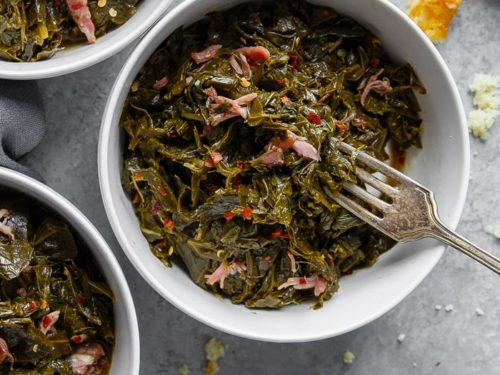Eat Your Greens

Not everything around here has to be a super bummer. So how about a story about the resurrection of nearly lost variations of collards?
Regardless of when or how they arrived stateside, collard greens flourished in Southern gardens. 20 main varieties, from the Yellow Cabbage collard to the Old Timey Green, established themselves as garden favorites. But after World War II, many Americans moved away from both their farmland and their agricultural lifestyles. One victim of this shift was the collard green. With fewer people farming, variety after variety dropped off the map, leaving only five types that could easily be found—Georgia Green, Champion, Vates, Morris Heading, and Green Glaze.
But five years ago, Ira Wallace and the members of the Seed Savers Exchange asked the USDA for over 60 collard green varieties to plant in Iowa. Wallace, as worker/owner of the cooperatively run Southern Exposure Seed Exchange, had been promoting the versatility and resilience of collards for years. Her inspiration for spearheading the Heirloom Collard Project was a series of photos taken by Edward Davis.
Davis and John Morgan, both geography professors at Emory & Henry College, traversed the South to collect rare heirloom collards between 2003 and 2007. The pair published a book on their quest, Collards: A Southern Tradition from Seed to Table, in 2015. They then gave the dozens of collard varieties they had gathered to the USDA. When Davis shared photos of all of the collards he tracked down, Wallace knew she wanted to help make the seeds widely available once more.
The project has several goals, among them seed preservation, documenting the stories of the still-living seed stewards that Davis and Morgan met while writing their book, and, perhaps most importantly, providing seeds to companies and gardeners interested in growing these storied old varieties.
So far, many have risen to the challenge. That’s according to Chris Smith, the James Beard award-winning author of The Whole Okra, executive director of Utopian Seed Project, and participant in the Project. At the moment, he explains, “there are eight farms that grew 20 varieties of collards this past fall, and 100 participants [currently] have three varieties growing in their backyards.” Participants document data on the growth, flavor, and yield of their collards, with the goal of better understanding the unique features of each variety.
I confess that my knowledge is reasonably limited. I have lived in the South for several years of my life, but east Tennessee and the Austin suburbs are not exactly centers of Black food culture or of whites who eat many collards. I do enjoy them and have come to enjoy most of your greens. I like strong flavors (except coffee) and so bitter is not a bad thing for me.
Anyway, let’s talk some greens on this Friday!


